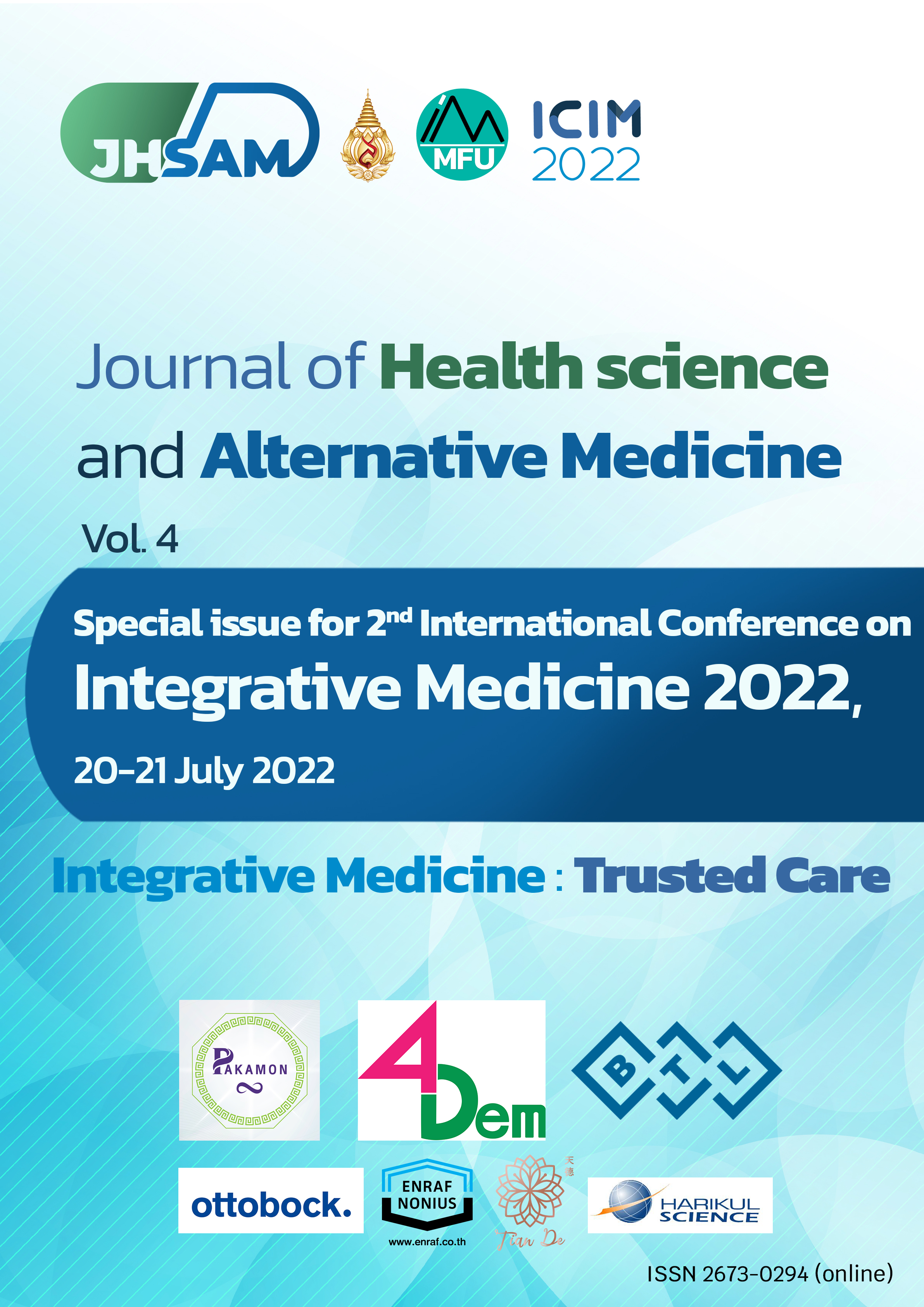A05. Surface Anatomical Positioning of the 2nd and 3rd Shoulder Signal Points of Court-type Thai Massage in Male Humans
Main Article Content
Abstract
Introduction: The 2nd and 3rd shoulder signal points are on the neck region of the human body which are essential for the examining and massaging of symptoms in Thai traditional medicine.
Objective: This research aimed to identify the 2nd and 3rd shoulder signal points on the x and y - coordination of male human body.
Methods: The thirty healthy male volunteers (18-22 years, 65-75 kg. weight, 170-179 cm. height and BMI = 18.5-24.9) were included in this research. They were divided into groups A B C and matched with the reference persons A B C consecutively. After the 2nd and 3rd shoulder signal points were identified by the reference persons, the lateral aspect of the mastoid process was tagged as the surface anatomical landmark. Then the photograph was recorded. The 2nd and 3rd shoulder signal points were measured with the ImageJ software.
Results: The lateral aspect of mastoid process was the origin of the x and y coordination. The average distance of 2nd shoulder signal point was at x = 0.7±0.6 cm.; y = -8.2±0.9 cm. in group A, x = 0.0±1.2 cm.; y = -8.7±0.9 cm. in group B, and x = 2.6±1.4 cm.; y = -14.5±1.1 cm. in group C. The distance of 3rd shoulder signal point was x = 0.8±0.3 cm.; y = -9.2±1.0 cm. in group A, x = 0.8±0.9 cm.; y = -11.5±1.3 cm. in group B, and x = 2.3±1.4 cm.; y = -15.2±1.1 cm. in group C. The average of intersection of 2nd and 3rd shoulder signal points were at x = 1.1±1.6 cm; y = -10.5±3.0 cm. and x = 1.3±1.2 cm.;
y = -11.9±2.7 cm. consecutively.
Conclusion: The signal points of court-type Thai massage could be manifested into the universal form and the surface anatomical landmark should be considered for identifying accurately.
Article Details

This work is licensed under a Creative Commons Attribution-NonCommercial-NoDerivatives 4.0 International License.
JHSAM publishes all articles in full open access, meaning unlimited use and reuse of articles with appropriate credit to the authors.
All our articles are published under a Creative Commons "CC-BY-NC-ND 4.0". License which permits use, distribution and reproduction in any medium,
provided that the original work is properly cited and is used for noncommercial purposes.
References
-

